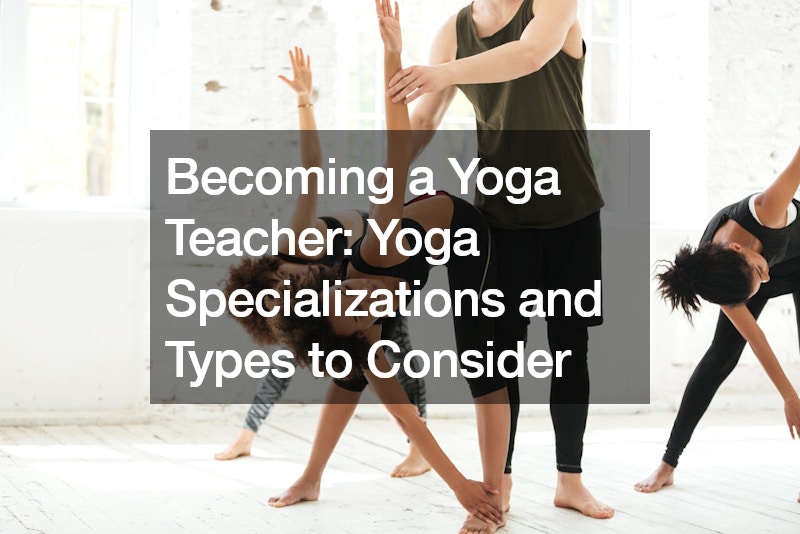Embarking on the journey to become a yoga teacher is a transformative and rewarding path that offers opportunities to specialize in various yoga disciplines. Whether you’re considering a career change or deepening your practice, understanding the different yoga specializations and types can help you choose the right path for your teaching journey. This guide explores popular yoga specializations and types, highlighting the importance of specialized training and the diverse paths available to aspiring yoga teachers.
The practice of yoga dates back thousands of years, originating in ancient India as a way to achieve harmony between the mind, body, and spirit. Yoga’s evolution from a philosophical and meditative practice to a structured system of physical postures (asanas) and breathing exercises (pranayama) has been shaped by centuries of cultural, religious, and philosophical influences.
Understanding Yoga Specializations
Yoga is a diverse discipline with numerous styles and specializations, each offering unique benefits and focuses. Specializing in a specific yoga style allows teachers to deepen their knowledge, refine their teaching skills, and cater to specific student needs. Here are some popular yoga specializations to consider:
Hatha Yoga: Known as the foundation of all yoga styles, Hatha yoga has a special focus on asanas (physical postures) and pranayama (breath control). It is ideal for beginners and emphasizes balance, flexibility, and relaxation.
Vinyasa Yoga: Also referred to as flow yoga, Vinyasa yoga synchronizes movement with breath in a dynamic sequence of poses. It promotes fluidity, strength, and mindfulness, making it popular among active individuals seeking a dynamic practice.
Ashtanga Yoga: Ashtanga yoga follows a specific sequence of postures linked with breath (vinyasa). It emphasizes strength, flexibility, and endurance through a structured series of poses, making it suitable for dedicated practitioners seeking a disciplined practice.
Yin Yoga: Yin yoga focuses on passive, long-held poses that target deep connective tissues and joints. It promotes relaxation, flexibility, and mindfulness, making it beneficial for stress relief and enhancing flexibility.
Iyengar Yoga: Founded by B.K.S. Iyengar, this style involves a high level of precision and alignment. It also involves the use of props (blocks, straps) to support practitioners in each pose. It is suitable for students of all levels seeking therapeutic benefits and precise alignment.
Importance of Yoga Teacher Training
To specialize in a particular yoga style, aspiring teachers must undergo specialized yoga teacher training programs. These programs provide comprehensive instruction in anatomy, philosophy, teaching methodologies, and hands-on practice specific to the chosen yoga style. For instance, completing a 200-hour or 300-hour yoga teacher training in Hatha yoga equips teachers with the skills and knowledge to teach foundational yoga postures, breathing techniques, and meditation practices effectively.
Choosing the Right Yoga Specialization
When choosing a yoga specialization, consider your personal practice, teaching goals, and the needs of your prospective students. Reflect on the following factors to determine the best specialization for you:
Personal Practice: Select a specialization that aligns with your personal yoga practice and resonates with your teaching style and philosophy.
Teaching Goals: Identify whether you aim to teach beginners, athletes, seniors, or individuals seeking therapeutic benefits. Choose a specialization that caters to your target demographic’s needs and preferences.
Career Opportunities: Research the demand for specific yoga styles in your local community or desired teaching environment. Consider opportunities for teaching group classes, private sessions, workshops, or retreats.
Advancing Your Yoga Teaching Career
As you gain experience and expertise in your chosen specialization, consider pursuing advanced yoga teacher training or certifications to enhance your credentials and teaching abilities. Advanced training programs, such as prenatal yoga teacher training, yoga therapy, or advanced anatomy studies, deepen your understanding of specialized practices and enable you to offer specialized services to diverse student populations.
Integrating Multiple Specializations
Some yoga teachers choose to integrate multiple specializations into their teaching repertoire to offer diverse classes and cater to a broader range of students. For example, combining Vinyasa flow with restorative yoga techniques allows teachers to create balanced and holistic class experiences that address both dynamic movement and relaxation.
Conclusion
Becoming a yoga teacher offers a fulfilling opportunity to share the transformative benefits of yoga with others while pursuing a career aligned with your passion for wellness and mindfulness. By specializing in a specific yoga style through dedicated yoga teacher training, you can deepen your knowledge, refine your teaching skills, and empower students on their yoga journeys. Whether you choose Hatha yoga, Vinyasa flow, Ashtanga yoga, Yin yoga, or Iyengar yoga, each specialization offers unique benefits that cater to diverse student needs and preferences. Embrace the journey of becoming a yoga teacher, continue to expand your expertise, and inspire others through the practice of yoga.
.




